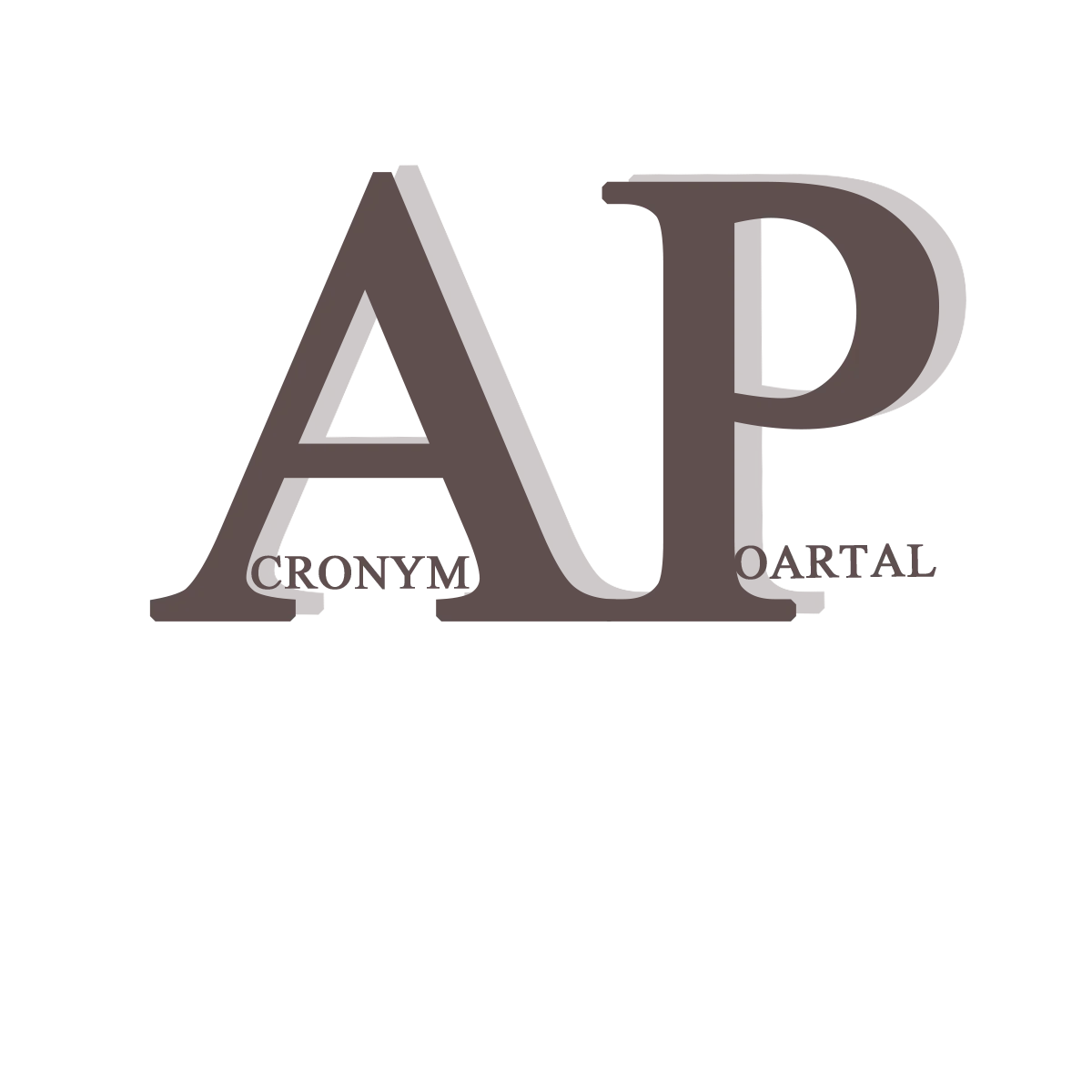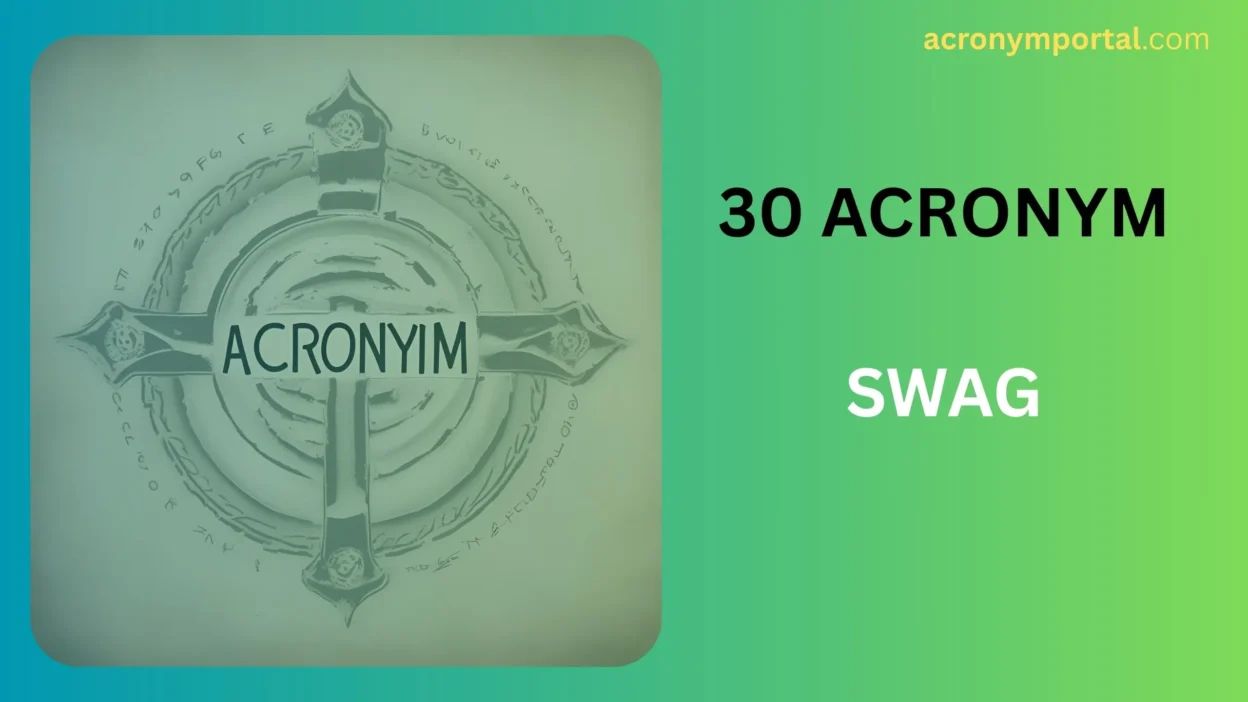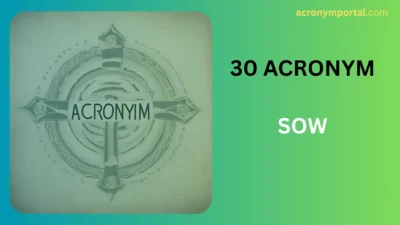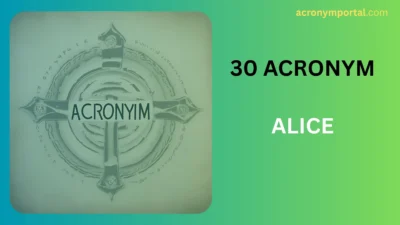“SWAG” — it’s short, punchy, and often pops up in conversation, emails, and team chats. But what does this acronym really mean? While its usage can vary wildly across industries, it often represents confidence, boldness, and style — both in personal flair and in professional risk-taking.
But just like with “PFA,” there are many situations where “SWAG” might not be the perfect fit. Whether you’re talking about a quick estimate, promotional gear, or someone’s confident vibe, there’s an alternative that might say it better — and more appropriately for the context.
This article explores the meaning of “SWAG,” breaks down its subtle nuances, and offers 30 fresh acronyms or alternatives with examples, emotional cues, and practical use cases to help you communicate with clarity and impact.
💡 What Does “SWAG” Mean?
Depending on the context, “SWAG” can stand for different things:
- Scientific Wild-Ass Guess – often used humorously in business or engineering to mean a rough estimate.
- Stuff We All Get – referring to branded promotional merchandise.
- Style With A Goal – a modern reinterpretation focused on fashion or personal branding.
Despite the different expansions, SWAG usually conveys a bold, informal tone — with undertones of confidence, spontaneity, or style.
Traits associated with SWAG:
- Confident
- Bold
- Casual or irreverent
- Stylish or expressive
- Risk-taking or improvisational
Now, let’s look at 30 alternatives to SWAG, what they mean, and when to use them.
🎒 30 SWAG Alternatives + When to Use Them
1. Ballpark Estimate
- Use when: You need a rough, quick guess.
- Example: That’s just a ballpark estimate based on last quarter’s numbers.
2. Rough Draft
- Use when: Presenting early work or ideas.
- Example: Here’s a rough draft of the layout — open to feedback!
3. Guesstimate
- Use when: You’re making a humorous or casual guess.
- Example: We’ll need around 300 units — just a guesstimate for now.
4. Prototype
- Use when: Sharing a rough model or mock-up.
- Example: This is just a prototype to explore the concept.
5. First Pass
- Use when: Early in a creative or technical process.
- Example: This is my first pass at the copy — let me know what sticks.
6. Beta Version
- Use when: Software or product testing context.
- Example: We’re releasing the beta version for early feedback.
7. Placeholder
- Use when: Indicating temporary or unconfirmed content.
- Example: This title is just a placeholder for now.
8. Promotional Merch
- Use when: Referring to branded items.
- Example: The conference provided lots of promotional merch.
9. Quick Take
- Use when: Offering a fast opinion or summary.
- Example: Here’s my quick take on the new design.
10. Back-of-the-Napkin
- Use when: Referring to a fast, informal idea or calculation.
- Example: It’s a back-of-the-napkin sketch, but it could work.
11. On-the-Fly Guess
- Use when: You want to show spontaneity.
- Example: That was an on-the-fly guess based on experience.
12. First Impression
- Use when: Sharing an early view or reaction.
- Example: Just my first impression, but the colors feel off-brand.
13. Concept Sketch
- Use when: Showing early-stage visuals.
- Example: This is a concept sketch of the new logo direction.
14. Early Assumption
- Use when: You’re estimating without much data.
- Example: Our early assumption is that traffic will double.
15. Trial Run
- Use when: Testing something out.
- Example: Let’s do a trial run and see how it goes.
16. Mock-up
- Use when: Visual placeholder.
- Example: This is a mock-up of the final landing page.
17. Minimal Viable Product (MVP)
- Use when: Business/startup context.
- Example: We’re launching the MVP next week.
18. Experimental Idea
- Use when: Sharing something that’s not fully developed.
- Example: It’s an experimental idea, but worth exploring.
19. Top-of-Head Thought
- Use when: Informal brainstorms.
- Example: Top-of-head thought: what if we changed the format entirely?
20. Throwaway Idea
- Use when: Signaling low commitment.
- Example: Just a throwaway idea — no pressure.
21. Sample Copy
- Use when: Drafting text or slogans.
- Example: Here’s some sample copy for the homepage.
22. Sketchy Estimate
- Use when: Being transparent about limited data.
- Example: It’s a sketchy estimate, but better than nothing.
23. Brainstorm Output
- Use when: Informal, creative context.
- Example: This came out of our brainstorm session yesterday.
24. SWAG Bag
- Use when: Literally referring to promotional gifts.
- Example: Loved the SWAG bag from the event!
25. Trial Concept
- Use when: Proposing a testable idea.
- Example: Here’s a trial concept to see what’s possible.
26. Confidence Guess
- Use when: You want to convey expertise.
- Example: That’s a confidence guess based on my past work.
27. Soft Launch
- Use when: Testing before going live.
- Example: We’ll do a soft launch next week with selected users.
28. Off-the-Cuff Idea
- Use when: Showing spontaneity or creativity.
- Example: Off-the-cuff idea: what if we hosted it virtually?
29. Spitball Estimate
- Use when: Playfully suggesting a number.
- Example: Just spitballing here — maybe $10K total cost?
30. Creative Draft
- Use when: Showcasing early creative work.
- Example: This is a creative draft of the brand refresh.
🎯 Choosing the Right Alternative: Context & Confidence
| Situation | Best Alternatives |
| Giving Rough Estimates | “Ballpark,” “Spitball,” “Sketchy Estimate” |
| Early Creative Work | “First Pass,” “Mock-up,” “Creative Draft” |
| Presenting Ideas Quickly | “On-the-Fly Guess,” “Top-of-Head Thought” |
| Startup/Product Context | “MVP,” “Beta Version,” “Soft Launch” |
| Corporate Communication | “Early Assumption,” “Trial Concept,” “Placeholder” |
| Event or Marketing Materials | “SWAG Bag,” “Promotional Merch” |
🌍 Cultural & Emotional Nuances
- In tech or startup culture, terms like “MVP,” “First Pass,” and “Beta” feel native and fast-moving.
- In corporate or finance settings, “Ballpark estimate” and “Placeholder” sound more appropriate and polished.
- In creative industries, “Mock-up,” “Creative Draft,” or “Concept Sketch” convey a sense of exploration.
- “SWAG” as a guess may not translate well globally—especially “Scientific Wild-Ass Guess,” which can be off-putting or confusing in formal or international settings.
🧠 Final Thoughts
“SWAG” can be fun, punchy, or useful—but not always the best fit. Whether you’re pitching an idea, estimating a cost, or previewing a creative piece, the right alternative helps match the message to the moment.
With these 30 nuanced options, you’ll never feel stuck typing “SWAG” again. Choose your words wisely—and communicate with the clarity and style you really mean.




